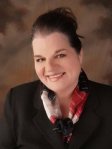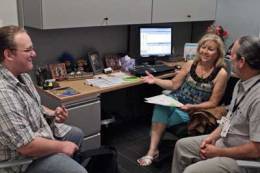Analisa Garza
Guest Blogger
Last week the San Antonio Hispanic Chamber of Commerce teamed up with representatives from Fortune 500 companies, governmental agencies, universities and colleges, and local high schools to host the third annual CORE4STEM EXPO at the Henry B. Gonzalez Convention Center. The EXPO is part of the Chamber’s STEM initiative to encourage students by increasing awareness and interest in college and career goals with a long term effect of attracting higher paying jobs to San Antonio thus strengthening and increasing the cities prosperity (“Core 4 stem,” 2012).
Approximately 2,000 7th and 8th graders had the opportunity to broaden their understanding of STEM college and career goals by participating in hands-on activities, viewing demonstrations, and hearing from guest speakers including Jose Hernandez, the first Latino astronaut.
Thanks to the coordinating efforts of Helen Torres, SAC Director of Partnerships and Extended Services, and her staff, San Antonio College had the opportunity to participate in the EXPO by hosting hundreds of students with learner-centered hands-on sessions in STEM fields.
Students were introduced to the world of “Polyhedron and OCTA-TETRA Models” by Dan Suttin, SAC Math Lab tutor, where they learned the connections between these shapes and their applications to careers in architecture, engineering, design, art and mathematics.They were able to apply cyber security principles through simulated programs led by Troy Touchette, chair of Computer Information Systems, where they defended computers from hackers.
They also visited five activity tables led by SAC STEM students where they were introduced to multiple engineering careers including Bio Engineering using equipment provided by the SAC Biology Department and Geothermal Engineering using models provided by Adelante Tejas. Following these activities the students participated in Q&A sessions with Dr. Dan Dimitriu, Program Coordinator of SAC Engineering, and current SAC engineering students Kat Bently and Christopher Woods.
At the completion of each session the SAC College Connections team distributed buttons, backpacks, T-shirts, and information regarding the STEM programs available to their age group on our campus.
This event was a great success for our city and due to the collaborative efforts of all the STEM affiliated departments on our campus; it was a wonderful representation of the opportunities available to students through San Antonio College.
Analisa Garza is the MESA Center Coordinator.


![image001[1] Helen Torres](https://stematsac.files.wordpress.com/2012/09/image0011.png?w=150&h=122)
